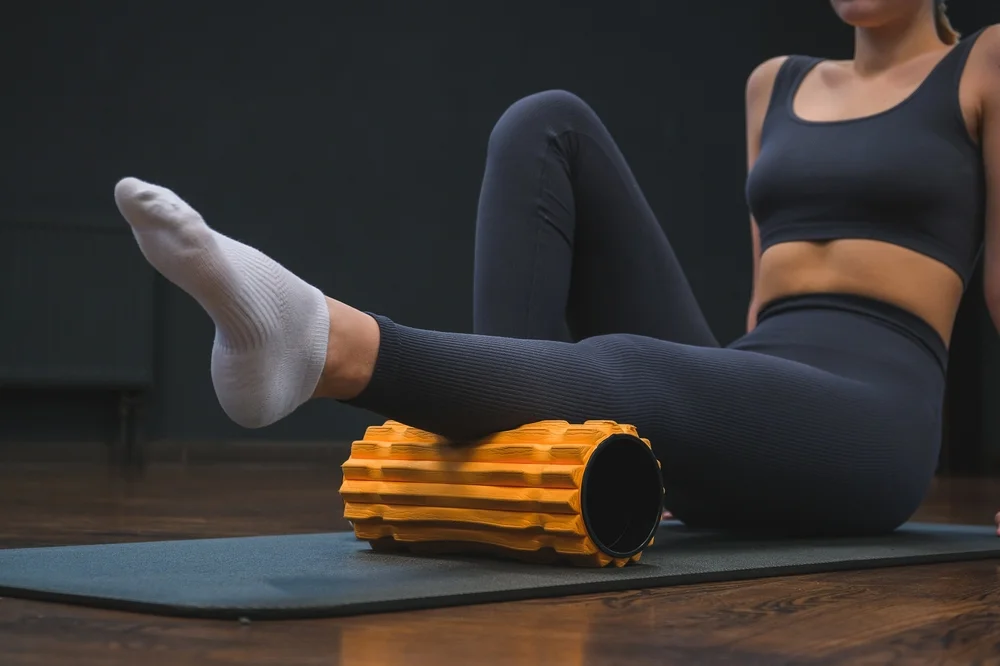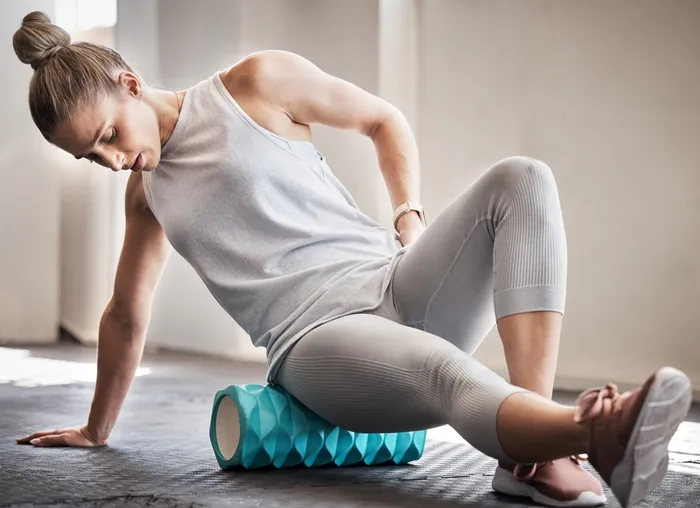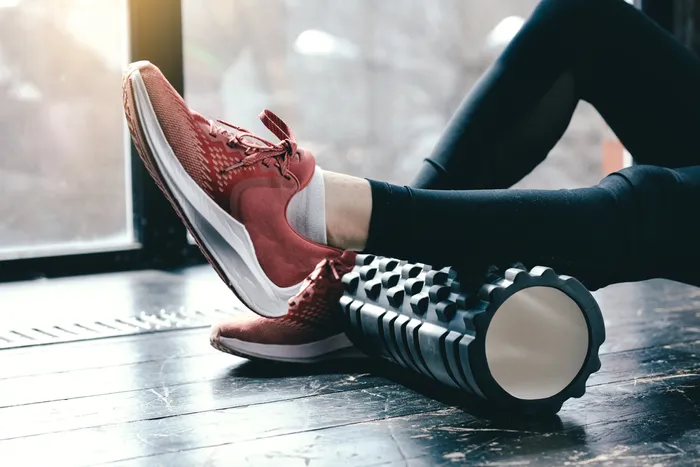Muscle Roller – Your Ultimate Recovery Tools
Maintaining an active and healthy lifestyle depends much on muscle healing. Whether your interests are athletics, gym-going, or resting from a busy workweek, healthy recovery ensures that your body stays in optimum shape. A muscle roller is a flexible tool with relieving, more flexibility, and injury prevention meant to assist in muscle healing. From their benefits to clever use methods, this page will address all you need to know about muscle rollers.
What is a Muscle Roller?
Made to lower muscular tension, boost blood flow, and increase flexibility, a muscle roller is a recovery tool. Usually used for self-myofascial release—a treatment directed at the fascia, or connective tissue enclosing muscles—they help break up adhesions and knots by continuous pressure, therefore increasing muscular performance and reducing pain.

Types of Muscle Rollers
Versatile instruments in many forms, muscle rollers satisfy various tastes and purposes by:
- Foam Rollers: Comprising foam with varying densities, these cylindrical rollers Starting users would find soft foam rollers ideal; experienced users and deeper pressure would be better suited from firmer options.
- Handheld Rollers: Perfect for tiny areas like the arms and calves, these rollers are portable and small with handles and a rolling surface that allows direct targeting of certain muscles.
- Textured Rollers: These rollers, which have knobs or ridges, mimic the results of a deep-tissue massage and provide a more intense massage.
- Vibrating Rollers: With their vibration technology, these advanced rollers increase blood flow and facilitate more effective tense muscle relaxing.
- Massage Sticks: These are thin and rod-like and help to target difficult-to-reach areas or provide controlled pressure.
Every type has unique benefits; so, you should choose the suitable one depending on your own degree of experience and recuperation goals.
Benefits of Using a Muscle Roller
- Eases Muscle Soreness and Stiffness: After a demanding activity, microtears and lactic acid build-up in the muscles creates muscle pain. A muscle roller reduces inflammation, increases blood flow, helps lactic acid break down, thereby alleviating this discomfort by constant pressure. From this follows faster recuperation and less general suffering.
- Improves Blood Circulation: One of the key benefits of a muscle roller is improved circulation. Turning over tight or hurting muscles increases blood flow in the affected places. Faster healing and improved muscular condition follow from this increased circulation giving the muscles required oxygen and nutrients.
- Enhances Flexibility and Range of Motion: Regular use of a muscle roller promotes the elasticity of surrounding tissues as well as muscles. This increases your range of motion and reduces your risk of harm during physical exercise. Constant rolling over time promotes smooth actions and helps to correct posture.
- Prevents Workout Injuries: One form of active warm-up is rolling muscles before your exercise. Relaxing tense areas and getting your muscles ready for activity will help you reduce your risk of strains and injuries. Furthermore helping to avoid delayed onset muscle soreness (DOMS) is rolling following an exercise, therefore ensuring your preparedness for your next session.
- Supports Long-Term Muscle Health: Apart from relieving immediate pain, including a muscle roller in your program promotes long-term muscular health. Frequent release of tension and preservation of muscle pliability serve to lower the wear and strain on your muscles.
How to Use a Muscle Roller Safely
Step-by-Step Guide for Beginners
- Start Slow: Start light, especially if you have never foam rolled before. Test how your muscles respond to the roller starting with milder, gentler passes over larger muscle groups like your legs or back.
- Target Specific Areas: Move gently over any hurting or stiff muscles you come across. Spend 20 to 30 seconds on every location, stopping sometimes on any confined areas to release tension.
- Control Your Movements: Roll in an orderly, under control manner to avoid overdoing it. Keep strong posture or alignment during the workout and move at around one inch every two seconds.
- Use Proper Body Mechanics: Using your arms or legs to support your body weight, roll more sensitive or smaller areas. This enables you control the used pressure and helps you prevent discomfort.
- Breath Deeply: Keep continuous, deep breathing during the treatment to help your muscles relax and boost the rolling’s effectiveness.

Common Mistakes to Avoid
- Over-Rolling: Spending too much time on one area may strain your muscles.
- Using Incorrect Pressure: Using too much pressure could cause bruising or pain.
Tips for Effective Rolling
- Roll Each Muscle Group for 1-2 Minutes: Work on rolling gently and purposefully over every muscle group. Give close attention to tight or sore areas so that you spend enough time to release tension without overdoing it.
- Breath Deeply to Help Your Muscles Relax: Deep, deliberate breathing keeps your body in relaxation and increases the rolling’s efficacy. It also lessens the possibility of muscular guarding, in which case uncomfortable muscles contract.
- Incorporate Stretching After Rolling for Added Benefits: To increase flexibility and accentuate the advantages of the massage, stretch the muscles you just rolled. Dynamic stretches help your muscles be ready for future use and increase blood flow even more.
- Use Consistent Pressure: Roll under consistent pressure; change as necessary depending on your comfort level and the muscle group you are working on.
- Roll in Both Directions: To provide a more complete massage and guarantee you target all areas of the fascia, move the roller both up and down and side to side over the muscle.
- Start with Larger Muscle Groups: Starting with larger muscle groups, Start with more expansive muscles like the thighs or back then work to ease into the program and avoid overstimulation by working on smaller, more specialized muscles.
Who Can Benefit from a Muscle Roller?
- Athletes and Gym-Goers: Regular high-intensity workout athletes and fitness enthusiasts depend totally on muscle rollers. These devices not only ease post-exercise discomfort but also increase recovery time, therefore enabling athletes to train more consistently and successfully. Regular use can also improve performance by means of improved flexibility and mobility.
- Office Workers: For people who spend several hours sat at workstations, muscle rollers can be revolutionary. Sometimes extended sitting causes neck, shoulder, and lower back pain. A muscular roller helps to treat these issues by lowering muscle tension and raising blood flow. It also facilitates better posture and reduced pain during the working day.
- Seniors: Muscle rollers enable elderly people to retain their mobility and flexibility rather effectively. Frequent use of a muscle roller aids in preserving muscles supple and joints more functioning as aging usually results in stiffness and decreased range of motion. This is a wonderful non-invasive method for raising general physical fitness.
- Active Lifestyle Enthusiasts: Those who enjoy yoga, cycling, or hiking might use muscle rollers to reduce their overuse risk and hasten recovery. Rolling out tight muscles after these workouts will help to ensure better performance and fewer pain during the next session.
- Rehabilitation Patients: Many rehabilitation programs for people recovering from accidents or surgery use muscle rollers. These devices under professional management can assist to progressively recover muscular function, increase circulation, and reduce stiffness.
- Everyday Individuals: Those who do not engage in planned physical activity also benefit from muscle rollers. Muscle exhaustion can result from daily chores including housekeeping or prolonged standing. A muscle roller reduces tension and helps to relax, therefore promoting general physical comfort.

Muscle Roller for Specific Areas
Neck and Shoulders
Using a portable roller or foam roller on the neck and shoulders will help tension brought on by prolonged sitting or stress be released. Stress smooth rolling motions and avoid too severe direct pressing of the neck vertebrae. Rolling these areas few minutes a day will assist to greatly reduce stiffness and improve posture.
Back and Spine
A foam roller has magical ability for alleviating back tension. Orienting the roller perpendicular to your body, gently roll from the upper back to the lower back. Avoid direct spine pressure; instead, give the muscles around it top priority. Fogh rolling along with stretches will increase spinal alignment and flexibility.
Legs
- Quads: Lie face down with the roller under your thighs; then, using your forearms, move your body forth and back. Stop and press very firmly in very tight locations.
- Hamstrings: To roll your hamstrings, seat on the floor with the roller under your thighs and slowly elevate your hips. Move under control and slowly.
- Calves: Roll from your knees to your ankles under your calves using your arms to elevate your body. Cross one leg over the other to force a deeper massage.
- Feet and Plantar Fascia: For foot pain and increased arch flexibility, a little handheld roller or massage ball works magic.
Choosing the Right Muscle Roller
Factors to Consider
- Size: For large muscle groups, larger rollers are excellent; for focused areas, smaller rollers are perfect.
- Firmness: Beginners should use softer rollers; advanced users should use stronger rollers since they offer more depth of pressure.
- Texture: Textured rollers give a more strong massage; smooth rollers are softer.
Recommendations
- Beginners: Rollers of soft foam.
- Advanced Users: For deeper muscle penetration, use vibrating or textured rollers.
The Science Behind Muscle Rollers
- Myofascial Release: Muscle rollers help the fascia, a connective tissue around muscles, relax. Known as myofascial release, this approach reduces pain and enhances flexibility.
- Backed by Research: Research shows that foam rolling reduces pain and helps muscles repair. Moreover, data suggests its impact in improving sports performance and injury prevention.
For more specifics, see reliable research from journals such as Journal of Athletic Training and Sports Medicine.

Muscle Roller FAQs
How Often Should You Use a Muscle Roller?
Use a muscle roller for sore muscles—daily or three to four times a week. Try to avoid overuse to prevent aggravation.
Can Muscle Rollers Help with Injuries?
They can, in fact, ease mild discomfort and stiffness. Still, see a professional for severe injuries.
Are Muscle Rollers Suitable for Beginners?
Surely! As your muscles change, progressively increase intensity beginning with a soft foam roller.
Conclusion
Anybody attempting to improve their recovery plan should have a basic but effective tool—a muscle roller. From pain relief to increased flexibility, it offers several benefits that might alter your road to fitness. Your regimen should incorporate a muscle roller today to observe personal changes.
Inquire questions or suggest ways to use muscle rollers. Post them in the comments below to support our ongoing communication!
